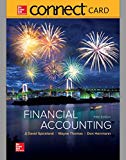
1.
Compute the profitability ratios of Company AE.
1.
Answer to Problem 6E
Financial Ratios: Financial ratios are the metrics used to evaluate the liquidity, capabilities, profitability, and overall performance of a company. The profitability ratios are:
- Gross profit ratio: 36.56%
- Return on assets: 20%
- Profit margin: 8.80%
- Asset Turnover: 2.27 times
- Return on equity: 40.38%
Explanation of Solution
Gross profit ratio: Gross profit is the financial ratio that shows the relationship between the gross profit and net sales. It represents gross profit as a percentage of net sales. Gross Profit is the difference between the net sales revenue, and the cost of goods sold. It can be calculated by dividing gross profit and net sales.
Formula:
Determine gross profit ratio.
Given: Company AE reports sales of $19,310,000.
Working Note:
Determine the amount of gross profit.
Return on assets: Return on assets determines the particular company’s overall earning power. It is determined by dividing sum of net income and average total assets.
Formula:
Determine return on assets ratio.
Working Note:
Determine the amount of average total assets.
Profit margin: This ratio gauges the operating profitability by quantifying the amount of income earned from business operations from the sales generated.
Formula:
Determine profit margin ratio.
Given: Company AE reports sales of $19,310,000 and net income of $1,700,000.
Asset Turnover: Asset turnover refers to the ratio calculated which determines the amount of sales revenue generated by the business with the use of the total assets owned by it.
Formula:
Determine asset turnover ratio.
Given: Company AE reports sales of $19,310,000, opening and closing balance of total assets amounts to $7,800,000 and $9,200,000 respectively.
Working Note:
Determine the amount of average total assets.
Return on equity: Return on equity is used to determine the relationship between the net income and the average common equity that are invested in the company.
Formula:
Determine return on stockholders’ equity ratio.
Given: Company AE reports net income of $1,700,000.
Working Note:
Determine the amount of average stockholders’ equity.
Compute the amount of opening and closing stockholders’ equity.
2.
Explain whether the company is more profitable or less profitable based on the given industry average.
2.
Explanation of Solution
Comparison between industry average and company’s performance:
| Ratios | Industry average | Company AE’s Performance |
| Gross profit ratio | 45% | 36.56% |
| Return on assets | 25% | 20% |
| Profit margin | 15% | 8.80% |
| Asset Turnover | 2.5 times | 2.27 times |
| Return on equity | 35% | 40.38% |
Table (1)
Company AE is less profitable as its profitability is lower than the industry average in every aspect, except in return on equity, where the ratio is better than the industry average.
Want to see more full solutions like this?
Chapter 12 Solutions
Financial Accounting Connect Access Card

 AccountingAccountingISBN:9781337272094Author:WARREN, Carl S., Reeve, James M., Duchac, Jonathan E.Publisher:Cengage Learning,
AccountingAccountingISBN:9781337272094Author:WARREN, Carl S., Reeve, James M., Duchac, Jonathan E.Publisher:Cengage Learning, Accounting Information SystemsAccountingISBN:9781337619202Author:Hall, James A.Publisher:Cengage Learning,
Accounting Information SystemsAccountingISBN:9781337619202Author:Hall, James A.Publisher:Cengage Learning, Horngren's Cost Accounting: A Managerial Emphasis...AccountingISBN:9780134475585Author:Srikant M. Datar, Madhav V. RajanPublisher:PEARSON
Horngren's Cost Accounting: A Managerial Emphasis...AccountingISBN:9780134475585Author:Srikant M. Datar, Madhav V. RajanPublisher:PEARSON Intermediate AccountingAccountingISBN:9781259722660Author:J. David Spiceland, Mark W. Nelson, Wayne M ThomasPublisher:McGraw-Hill Education
Intermediate AccountingAccountingISBN:9781259722660Author:J. David Spiceland, Mark W. Nelson, Wayne M ThomasPublisher:McGraw-Hill Education Financial and Managerial AccountingAccountingISBN:9781259726705Author:John J Wild, Ken W. Shaw, Barbara Chiappetta Fundamental Accounting PrinciplesPublisher:McGraw-Hill Education
Financial and Managerial AccountingAccountingISBN:9781259726705Author:John J Wild, Ken W. Shaw, Barbara Chiappetta Fundamental Accounting PrinciplesPublisher:McGraw-Hill Education





